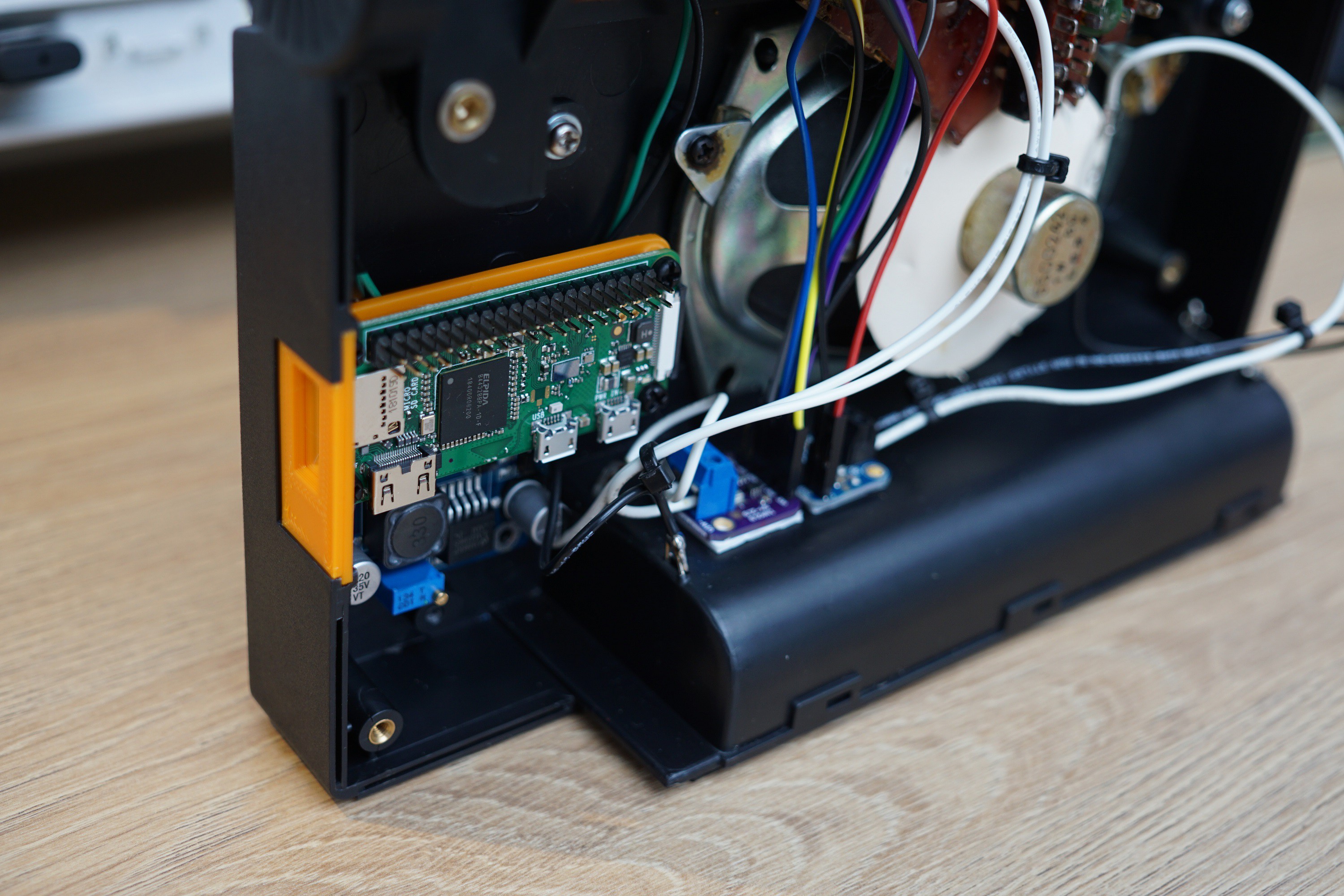After I made some space in the housing, I printed a carrier plate for a Raspberry Pi Zero W and used the opening in the housing of the former power supply connector as a slot for the Pi's SD card.

The radio is supplied with 6 Mignon Type C batteries via the existing battery compartment. Since the Pi does not have an AD converter, I decided to use an INA219 module (especially since I still have some of these breakout boards here) to monitor the battery voltage. The INA219 module also offers me the possibility to log the power consumption of my radio, even if you don't really need it, it's nice to know.
The new batteries show a voltage of just over 9V. This voltage is reduced to 5V using a buck converter and supplies the Pi.

I decided to print a new cover. I inserted an LED into it, which should light up permanently when the radio is switched on and starts to flash when the voltage of the batteries is too low and they should be replaced. I also installed a rotary encoder (KY040) in the ceiling plate. I would like to be able to adjust the volume in future.

After I wired and connected everything, I made a first test with the "piCorePlayer". The music runs wonderfully, which made me very happy because I hadn't tested whether the old speaker was still working.
Now I would like to be able to read out the INA219 module and bring the encoder and the LED to life. I am currently trying different options. On the one hand with the piCorePlayer, as well as with a raspbian-lite version and manual installation of the Squeezelite-player. If everything works, I would be happy to present my solution here.
 Benjamin Prescher
Benjamin Prescher
Discussions
Become a Hackaday.io Member
Create an account to leave a comment. Already have an account? Log In.